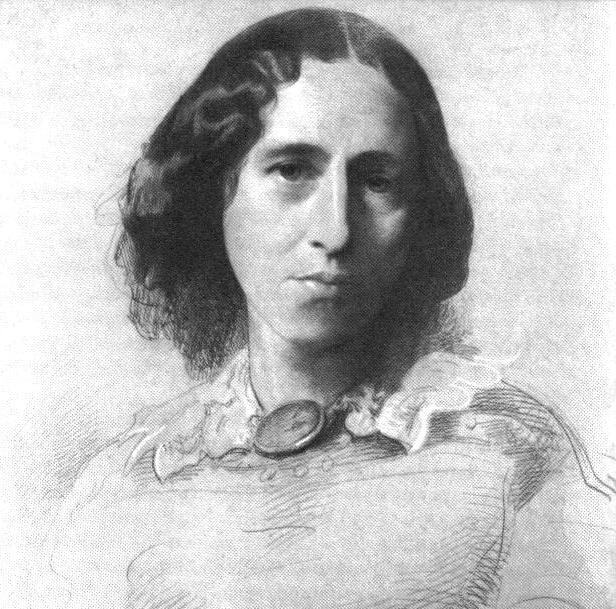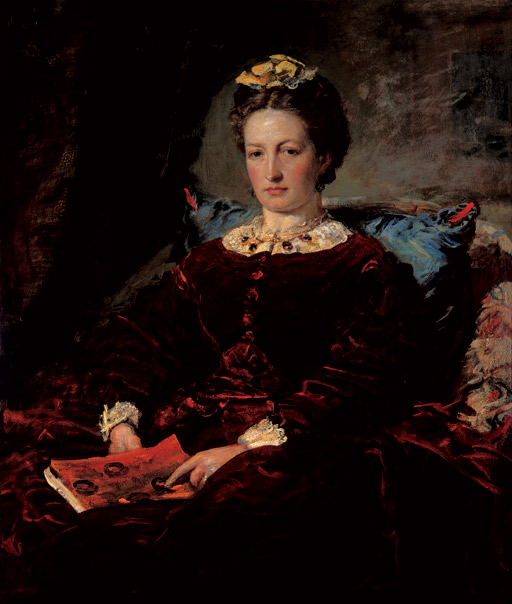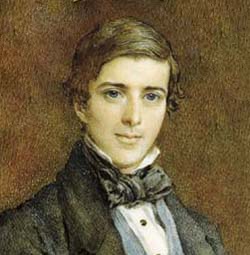|
Elizabeth Lynn Linton
Eliza Lynn Linton (10 February 1822 – 14 July 1898) was the first female salaried journalist in Britain and the author of over 20 novels. Despite her path-breaking role as an independent woman, many of her essays took a strong anti-feminist slant. Life Eliza Lynn Linton was born in Keswick, Cumbria, England, the youngest of the twelve children of the Rev. James Lynn, vicar of Crosthwaite, and his wife Charlotte, who was the daughter of a bishop of Carlisle. The death of her mother when Eliza was five months old meant a chaotic upbringing, in which she was largely self-educated, but in 1845 she left home to earn her living as a writer in London. After moving to Paris, she married W. J. Linton in 1858, an eminent wood-engraver, who was also a poet of note, a writer on his craft, and a Chartist agitator. She moved into his ramshackle house, Brantwood, in the Lake District, with his seven children from an earlier marriage, and wrote there a novel set locally: ''Lizzie Lorton of ... [...More Info...] [...Related Items...] OR: [Wikipedia] [Google] [Baidu] |
:Template:Infobox Writer/doc
Infobox writer may be used to summarize information about a person who is a writer/author (includes screenwriters). If the writer-specific fields here are not needed, consider using the more general ; other infoboxes there can be found in :People and person infobox templates. This template may also be used as a module (or sub-template) of ; see WikiProject Infoboxes/embed for guidance on such usage. Syntax The infobox may be added by pasting the template as shown below into an article. All fields are optional. Any unused parameter names can be left blank or omitted. Parameters Please remove any parameters from an article's infobox that are unlikely to be used. All parameters are optional. Unless otherwise specified, if a parameter has multiple values, they should be comma-separated using the template: : which produces: : , language= If any of the individual values contain commas already, add to use semi-colons as separators: : which produces: : , ps ... [...More Info...] [...Related Items...] OR: [Wikipedia] [Google] [Baidu] |
George Eliot
Mary Ann Evans (22 November 1819 – 22 December 1880; alternatively Mary Anne or Marian), known by her pen name George Eliot, was an English novelist, poet, journalist, translator, and one of the leading writers of the Victorian era. She wrote seven novels: ''Adam Bede'' (1859), ''The Mill on the Floss'' (1860), ''Silas Marner'' (1861), ''Romola'' (1862–63), ''Felix Holt, the Radical'' (1866), ''Middlemarch'' (1871–72) and '' Daniel Deronda'' (1876). Like Charles Dickens and Thomas Hardy, she emerged from provincial England; most of her works are set there. Her works are known for their realism, psychological insight, sense of place and detailed depiction of the countryside. ''Middlemarch'' was described by the novelist Virginia Woolf as "one of the few English novels written for grown-up people"Woolf, Virginia. "George Eliot." ''The Common Reader''. New York: Harcourt, Brace, and World, 1925. pp. 166–76. and by Martin Amis and Julian Barnes as the greatest novel in ... [...More Info...] [...Related Items...] OR: [Wikipedia] [Google] [Baidu] |
The Autobiography Of Christopher Kirkland
''The'' () is a grammatical article in English, denoting persons or things already mentioned, under discussion, implied or otherwise presumed familiar to listeners, readers, or speakers. It is the definite article in English. ''The'' is the most frequently used word in the English language; studies and analyses of texts have found it to account for seven percent of all printed English-language words. It is derived from gendered articles in Old English which combined in Middle English and now has a single form used with pronouns of any gender. The word can be used with both singular and plural nouns, and with a noun that starts with any letter. This is different from many other languages, which have different forms of the definite article for different genders or numbers. Pronunciation In most dialects, "the" is pronounced as (with the voiced dental fricative followed by a schwa) when followed by a consonant sound, and as (homophone of pronoun ''thee'') when followed by a v ... [...More Info...] [...Related Items...] OR: [Wikipedia] [Google] [Baidu] |
Patricia Kemball
Patricia is a female given name of Latin origin. Derived from the Latin word ''patrician'', meaning "noble"; it is the feminine form of the masculine given name Patrick. The name Patricia was the second most common female name in the United States according to the 1990 US Census. Another well-known variant of this is "Patrice". According to the US Social Security Administration records, the use of the name for newborns peaked at #3 from 1937 to 1943 in the United States, after which it dropped in popularity, sliding to #745 in 2016.Popularity of a NameSocial Security Administration''ssa.gov'', accessed June 26, 2017 From 1928 to 1967, the name was ranked among the top 11 female names. In Portuguese and Spanish-speaking Latin-American countries, the name Patrícia/Patricia is common as well, pronounced . In Catalan and Portuguese it is written Patrícia, while in Italy, Germany and Austria Patrizia is the form, pronounced . In Polish, the variant is Patrycja. It is also used in ... [...More Info...] [...Related Items...] OR: [Wikipedia] [Google] [Baidu] |
The True History Of Joshua Davidson
''The'' () is a grammatical article in English, denoting persons or things already mentioned, under discussion, implied or otherwise presumed familiar to listeners, readers, or speakers. It is the definite article in English. ''The'' is the most frequently used word in the English language; studies and analyses of texts have found it to account for seven percent of all printed English-language words. It is derived from gendered articles in Old English which combined in Middle English and now has a single form used with pronouns of any gender. The word can be used with both singular and plural nouns, and with a noun that starts with any letter. This is different from many other languages, which have different forms of the definite article for different genders or numbers. Pronunciation In most dialects, "the" is pronounced as (with the voiced dental fricative followed by a schwa) when followed by a consonant sound, and as (homophone of pronoun ''thee'') when followed by a v ... [...More Info...] [...Related Items...] OR: [Wikipedia] [Google] [Baidu] |
Tina Whitaker
Tina Whitaker (born Tina Scalia 1858–1957) was an Italian author and hostess. She was the daughter of General Alfonso Scalia, who landed in Sicily with Giuseppe Garibaldi during the years leading up to the Risorgimento. She married Joseph Whitaker, whose family had established a Marsala wine business in Sicily, and then diversified into other businesses. Their story is told in Raleigh Trevelyan's 1972 ''Princes Under the Volcano: Two Hundred Years of a British Dynasty in Sicily''. The couple had two daughters; the elder of whom married General Antonio Di Giorgio (1868-1932), a Minister of War who fought in the 1st and 2nd wars in Abyssinia. Thus the family was firmly established in the upper echelons of Italian Society. Choosing to settle in Palermo over the more provincial Marsala, the couple built as their family home the '' Villa Malfitano'', an Art Nouveau mansion near Zisa Castle on the Via Dante. In these years, the Belle Époque age, the house was the venue for lavish ... [...More Info...] [...Related Items...] OR: [Wikipedia] [Google] [Baidu] |
Palermo
Palermo ( , ; scn, Palermu , locally also or ) is a city in southern Italy, the capital (political), capital of both the autonomous area, autonomous region of Sicily and the Metropolitan City of Palermo, the city's surrounding metropolitan province. The city is noted for its history, culture, architecture and gastronomy, playing an important role throughout much of its existence; it is over 2,700 years old. Palermo is in the northwest of the island of Sicily, by the Gulf of Palermo in the Tyrrhenian Sea. The city was founded in 734 BC by the Phoenicians as ("flower"). Palermo then became a possession of Carthage. Two ancient Greeks, Greek ancient Greek colonization, colonies were established, known collectively as ; the Carthaginians used this name on their coins after the 5th centuryBC. As , the town became part of the Roman Republic and Roman Empire, Empire for over a thousand years. From 831 to 1072 the city was under History of Islam in southern Italy, Arab ru ... [...More Info...] [...Related Items...] OR: [Wikipedia] [Google] [Baidu] |
The Cornhill Magazine
''The Cornhill Magazine'' (1860–1975) was a monthly Victorian magazine and literary journal named after the street address of the founding publisher Smith, Elder & Co. at 65 Cornhill in London.Laurel Brake and Marysa Demoor, ''Dictionary of Nineteenth-Century Journalism in Great Britain and Ireland''. Ghent: Academia Press and London: British Library, 2009. (p. 145). In the 1860s, under the editorship of William Makepeace Thackeray, the paper's large circulation peaked around 110,000. Due to emerging competitors, circulation fell to 20,000 by 1870. The following year, Leslie Stephen took over as editor. When Stephen left in 1882, circulation had further fallen to 12,000. ''The Cornhill'' was purchased by John Murray in 1912, and continued to publish issues until 1975. History ''The Cornhill'' was founded by George Murray Smith in 1859, and the first issue displayed the cover date January 1860. A literary journal with articles on diverse subjects and serialisations of ne ... [...More Info...] [...Related Items...] OR: [Wikipedia] [Google] [Baidu] |
Ainsworth's Magazine
William Harrison Ainsworth (4 February 18053 January 1882) was an English historical novelist born at King Street in Manchester. He trained as a lawyer, but the legal profession held no attraction for him. While completing his legal studies in London he met the publisher John Ebers, at that time manager of the King's Theatre, Haymarket. Ebers introduced Ainsworth to literary and dramatic circles, and to his daughter, who became Ainsworth's wife. Ainsworth briefly tried the publishing business, but soon gave it up and devoted himself to journalism and literature. His first success as a writer came with '' Rookwood'' in 1834, which features Dick Turpin as its leading character. A stream of 39 novels followed, the last of which appeared in 1881. Ainsworth died in Reigate on 3 January 1882, and was buried in Kensal Green Cemetery. Biography Early life Ainsworth was born on 4 February 1805 in the family house at 21 King Street, Manchester, to Thomas Ainsworth, a prominen ... [...More Info...] [...Related Items...] OR: [Wikipedia] [Google] [Baidu] |
The Daily News (UK)
''The Daily News'' was a national daily newspaper in the United Kingdom. The ''News'' was founded in 1846 by Charles Dickens, who also served as the newspaper's first editor. It was conceived as a radical rival to the right-wing ''Morning Chronicle''. The paper was not at first a commercial success. Dickens edited 17 issues before handing over the editorship to his friend John Forster, who had more experience in journalism than Dickens. Forster ran the paper until 1870.''London Daily News: General Description'', Rossetti Archive.Undated Accessed: 2007-09-14. , |
St James's Gazette
The ''St James's Gazette'' was a London evening newspaper published from 1880 to 1905. It was founded by the Conservative Henry Hucks Gibbs, later Baron Aldenham, a director of the Bank of England 1853–1901 and its governor 1875–1877; the paper's first editor was Frederick Greenwood, previously the editor of the Conservative-leaning ''Pall Mall Gazette''. The ''St James's Gazette'' was bought by Edward Steinkopff, founder of the Apollinaris mineral water company, in 1888. Greenwood left, to be succeeded by Sidney Low (1888–1897), Hugh Chisholm (1897–1899) and Ronald McNeill (1900–1904). Steinkopff sold the paper to C. Arthur Pearson in 1903, who merged it with the ''Evening Standard'' in March 1905, ending the paper's daily publication. A weekly digest of the paper, the ''St James's Budget'', appeared from 3 July 1880 until 3 February 1911. History Background The ''St James's Gazette'' was founded in 1880 out of the ''Pall Mall Gazette'', which was (in the phr ... [...More Info...] [...Related Items...] OR: [Wikipedia] [Google] [Baidu] |
Household Words
''Household Words'' was an English weekly magazine edited by Charles Dickens in the 1850s. It took its name from the line in Shakespeare's ''Henry V'': "Familiar in his mouth as household words." History During the planning stages, titles originally considered by Dickens included ''The Robin'', ''The Household Voice'', ''The Comrade'', ''The Lever'', and ''The Highway of Life''. ''Household Words'' was published every Saturday from March 1850 to May 1859. Each number cost a mere tuppence, thereby ensuring a wide readership. The publication's first edition carried a section covering the paper's principles, entitled "A Preliminary Word": A longer version of the publication's principles appeared in newspapers such as '' The Argus'' in September 1850. Theoretically, the paper championed the cause of the poor and working classes, but in fact it addressed itself almost exclusively to the middle class. Only the name of Dickens, the journal's "conductor", appeared; articles were un ... [...More Info...] [...Related Items...] OR: [Wikipedia] [Google] [Baidu] |

.png)



